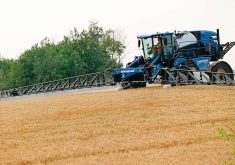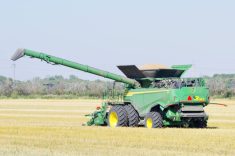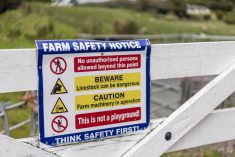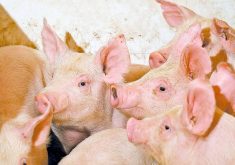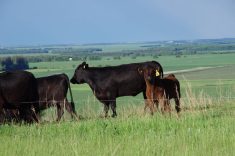Over the last two decades there has been a noticeable increase in education and training designed to make farms safer places for children to grow up.
Kids, even toddlers, often like to tag along with their farming parent. As they grow older and more capable they have traditionally been an important source of labour on the farm, whether it’s collecting the eggs from the henhouse every day or helping out in the fields.
But as farms have grown larger, there are fewer jobs that young people can do safely and there has been increasing pressure on the farming community to acknowledge those limitations.
Read Also
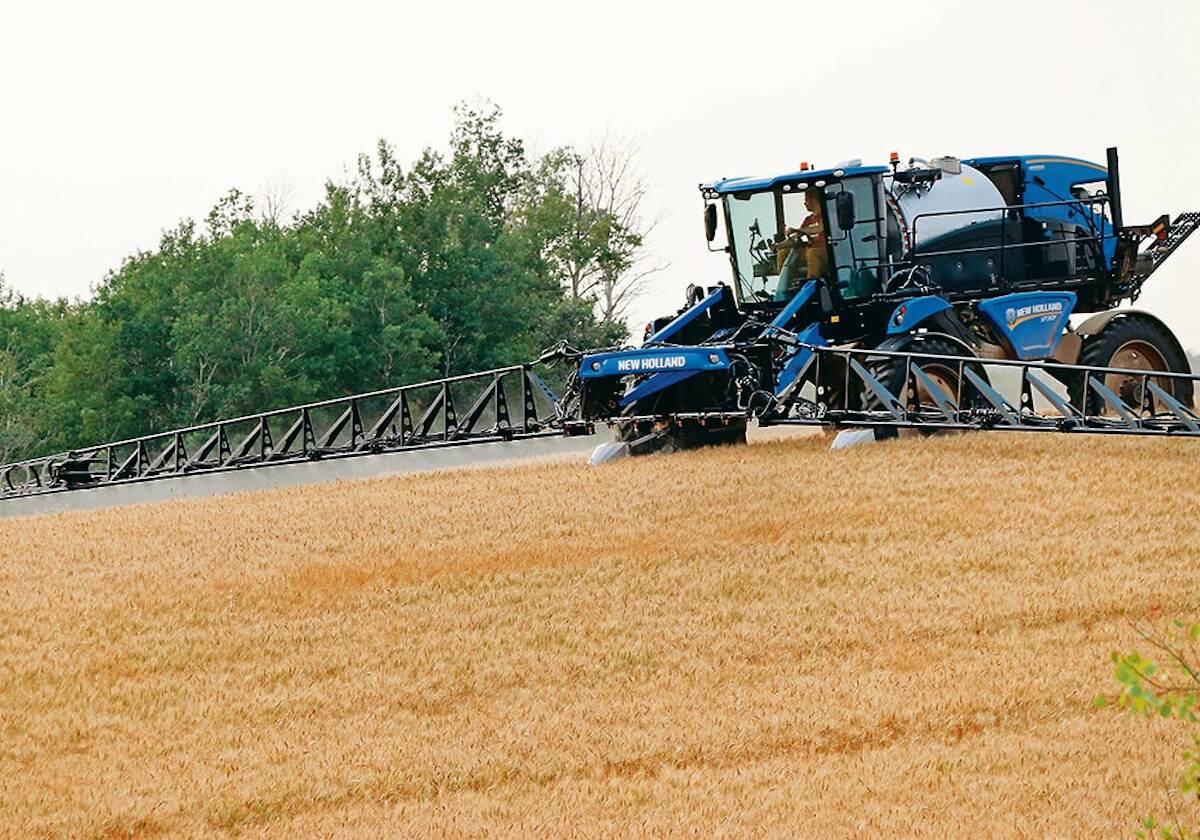
Farming still has digital walls to scale
Canadian farms still face the same obstacles to adopting digital agriculture technology, despite the years industry and policy makers have had to break them down.
Educational material is available to help parents decide age-appropriate tasks. There is guidance about where kids should be and not be when farm equipment is operating.
The messaging has taken many forms, ranging from promotional campaigns to peer pressure. Media outlets are strongly discouraged from publishing “cute-kid” photos, often sent in by proud parents or grandparents, of a child on the farm engaged in risky activities such as playing hide-and-seek around farm equipment or riding as a passenger or posing inside the livestock pen.
And lately, authorities have also become more aggressive at prosecuting parents when their kids have been injured or killed on the farm.
However, a new report published in the Journal of Preventative Medicine earlier this month delivers a stark assessment of those efforts.
They aren’t working.
A team of Canadian and U.S. researchers working with the Injury Prevention Centre at the University of Alberta’s School of Public Health cross-referenced data from multiple resources to compare trends in fatal injuries for farm children over the past 23 years.
The number of farm fatalities involving children has declined but only because the farm population is shrinking. Proportionally, there is roughly the same number of accidental deaths involving farm youth under the age of 19 as there was two decades ago.
The number seems small, four out of 100,000, but that’s higher than those dying of cancer or suicide. It’s also higher than accidental deaths involving non-farming children.
“Findings from this national analysis, conducted with data spanning 23 years, are simple and telling. While many well-intended prevention efforts aimed at child safety on the family farm have been implemented in Canada over this time period, these initiatives appear to have ultimately been ineffective at achieving their end goal of reducing fatalities to farm children,” the report says.
Machinery-related fatalities are by far the biggest hazard for youth on the farm, but drowning and entrapment also rank high.
Youth fatalities involving off-road vehicles have increasingly become a problem since their introduction in the 1980s, the researchers said. But once again, efforts to raise awareness have not reduced injuries and death.
So what gives?
There is no denying it is harder to get daycare in a rural setting, especially when work hours can be long and sporadic. As well, farms are chronically short of labour, so it’s all hands on deck, even if some of those hands are small ones.
Ultimately, it comes down to farming culture. The researchers noted that many farm families pride themselves in involving their kids in farm work. Farmers themselves tend to be risk-takers, often forgoing safety in the name of getting the job done. That modelling rubs off on the younger generation.
The authors say more research, monitoring and perhaps more regulation is needed.
Judging from the reaction from the farming community when governments brought in regulations to better protect hired farm workers, regulatory measures to keep farm children safe won’t be welcomed.
However, it should be no surprise that change designed to save lives needs to be legislated.
Seatbelts were invented in the late 1800s. It wasn’t until the mid-1960s that automakers were required to install them, and 25 years of public education efforts later, governments started forcing people to use them.
We all know drinking and driving are a bad combination, yet laws to prevent such behaviour have had to become increasingly forceful.
Keeping kids safe on the farm is a dilemma the farming community needs to address — before governments do it for them.








